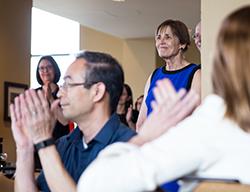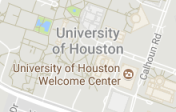Check for Learning

Who's doing this at UT?
Meme Drumwright, Advertising & Public Relations, teaches a class in ethics and realized she had limited knowledge about what her students knew about ethics and even how they defined it. To check for students’ prior understandings of these concepts, she had them create a concept map that focused on defining ethics. At the end of the semester, she had them revise the early version according to what they had learned. The result was a picture of student learning for them and for her.
How Can I Do This?
Use your learning outcomes to create checks for learning before, during, and after instruction that tell you and your students how well they are achieving those outcomes. Focus on assessing what students already know or believe, what they are coming to understand or what they are learning, and then what they have learned.
Before: Diagnostic Checks for Learning
Diagnostic assessments provide usable knowledge about what students already know and understand before instruction. Ask yourself these questions as you plan this check for learning:
- What do I assume students already know?
- What kinds of questions will help me confirm/disconfirm my assumptions?
- What are some common misconceptions or myths related to my subject?
- How am I going to analyze the results?
- How will I reshape my instruction in response to what I learn from those results?
- See Table of Checks for Learning Before Instruction
During: Formative Checks for Learning
Formative assessments show how students are progressing toward the course learning outcomes during a particular period of instruction. Ask yourself these questions as you plan these checks for learning:
- What information might help me and my students gauge their progress toward our learning targets?
- How can I use different formative assessments to get a full picture of what students know and can do?
- What feedback can I develop to move students forward in their learning?
- See Table of Checks for Learning During Instruction
After: Summative Checks for Learning
Summative assessments “sum up” what your students have learned after completing a course or instructional unit. Ask yourself these questions as you plan your summative checks for learning:
- What learning outcomes am I assessing?
- How does the context of my class (size, level, time, departmental/professional requirements, etc.) shape my assessment?
- What levels of knowledge (see Bloom’s taxonomy) am I assessing?
- What kind of assessment will be the best way for me to know how my students achieved those course/unit outcomes?
- See Table of Checks for Learning After Instruction
- See Putting it All Together to Build an Exam
Why Is This Important?
Learning takes place in students’ heads, and we can’t see what’s actually being learned until we check for learning. These checks allow you to “see” and assess how and what students are learning. You and your students can use this information throughout the instructional process:
Checks before learning establish a baseline to work from.
Checks during learning allow for adjustments along the way.
- Help you adapt your plans according to what students are learning.
- Give you a sense of how many students are struggling or where the concentrations of confusion are.
- Inform students about what they are learning and where they need to work more.
- Learn more about assessments that don't have to be graded.
Checks after learning measure how much ground was covered.
- Help you evaluate your plan’s success according to targeted learning outcomes.
- Give you valuable information on student learning you can use to plan for your next teaching experience.
- Give students a record of what they have learned.
Explore More

Digital Storytelling
UH College of Education explores the educational uses of digital storytelling.

